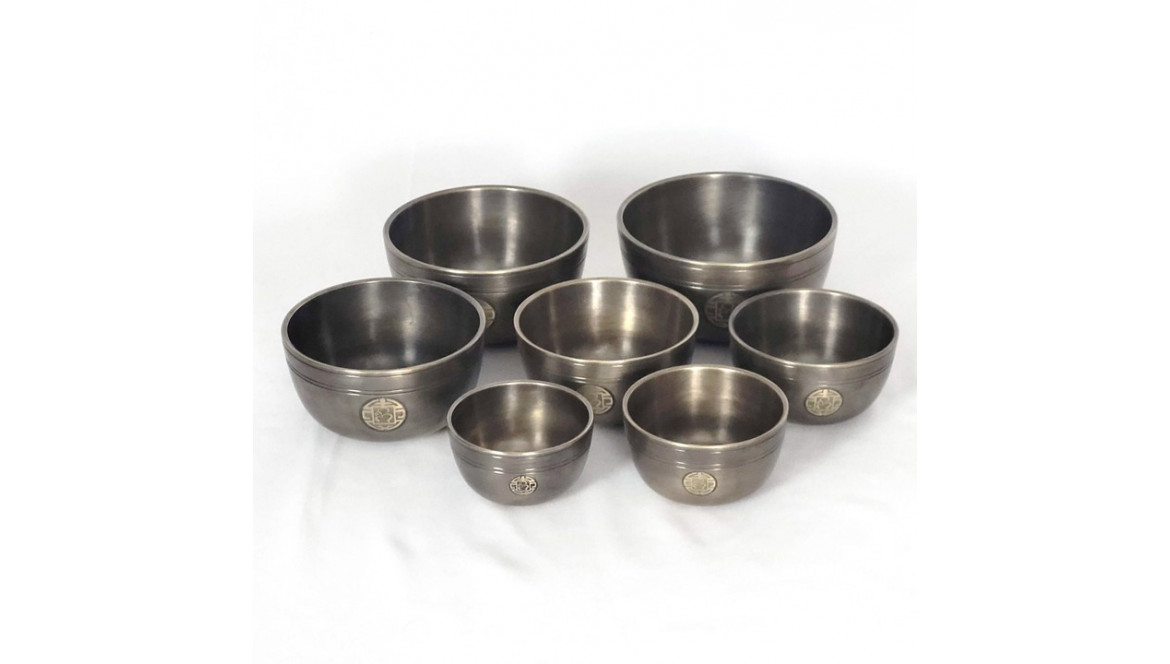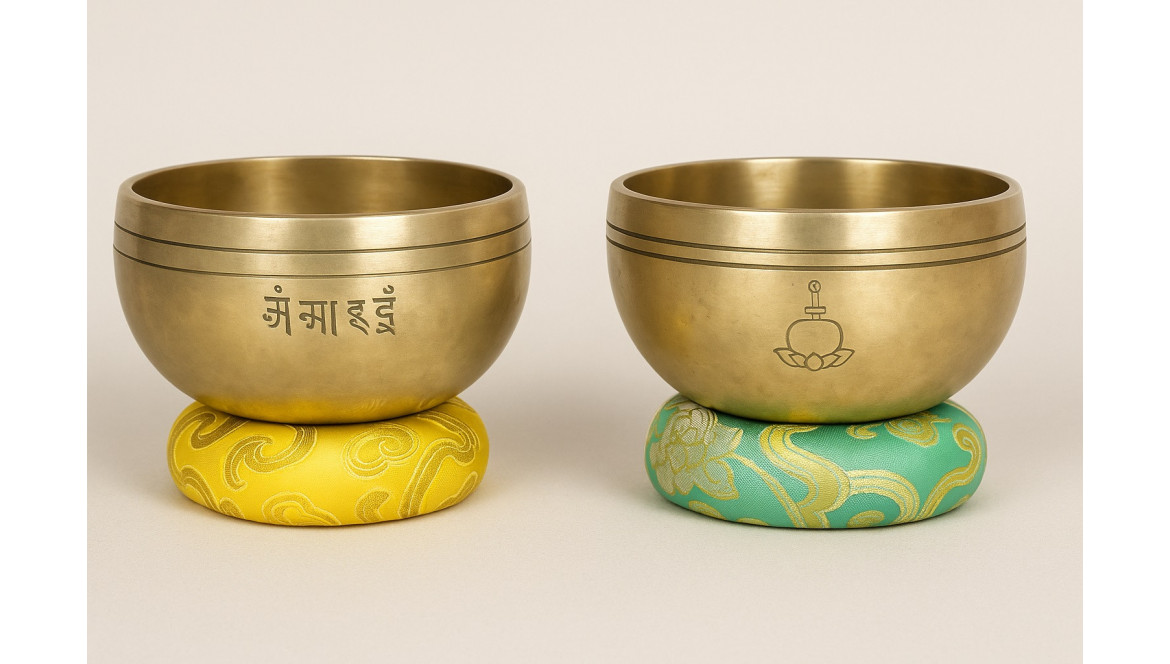Sound Healing vs. Sound Therapy: Key Differences Explained

Discover the essence of sound healing and sound therapy, their shared roots, unique differences, and how they've evolved from ancient practices to modern wellness techniques.
Sound Healing vs. Sound Therapy: Exploring Their Differences
Sound has been an integral part of human culture and wellness for centuries. From ancient chants and mantras to modern clinical therapies, sound is used as a powerful tool to influence emotions, promote relaxation, and improve overall well-being. Two prominent approaches that have gained significant attention are sound healing and sound therapy. While both practices utilize the transformative power of sound, they cater to different needs and audiences, often leading to confusion about their purpose and application.
This article aims to unravel the distinctions between sound healing and sound therapy. By exploring their principles, techniques, benefits, and cultural roots, we’ll help you understand the unique characteristics of each. Whether you're seeking spiritual enrichment, stress relief, or clinical support, knowing the differences can guide you toward the practice that aligns with your goals and values.
What is Sound Healing?
Sound healing is an ancient practice that uses specific vibrations, tones, and frequencies to promote physical, emotional, and spiritual well-being. At its core, sound healing operates on the principle that sound vibrations can influence the body’s energy fields, bringing them into a state of harmony and balance. The practice aligns with the belief that physical or emotional ailments arise when there is disharmony or blockage in the body’s energy flow. By utilizing sound, practitioners aim to clear these blockages and restore balance, leading to overall healing and rejuvenation.
Techniques Used in Sound Healing
Sound healing incorporates various instruments and vocal techniques, each producing specific frequencies believed to heal the mind and body:
- Singing Bowls: Tibetan singing bowls and crystal bowls are widely used for meditation and relaxation, producing soothing tones that resonate with the body's energy centers (chakras).
- Gongs: Gongs create deep, resonant vibrations that penetrate the body, helping to release tension and promote a meditative state.
- Tuning Forks: These produce pure sound frequencies that are placed on specific points of the body or energy fields to align and balance energy.
- Drums and Rattles: Rhythmic drumming is often used to synchronize brainwaves, leading to deep states of relaxation.
- Vocal Toning and Mantras: Practitioners use their voices to chant, hum, or sing specific tones that carry healing frequencies. "Om" chanting, for instance, is believed to connect the individual to universal energy.
Benefits of Sound Healing
Sound healing is renowned for its profound impact on emotional and spiritual well-being. Some of the key benefits include:
- Relaxation and Stress Relief: The vibrations and calming sounds help slow down brainwaves, inducing deep relaxation and reducing stress.
- Energy Balancing: Sound healing aligns the body’s energy centers (chakras), restoring harmony and improving energy flow by balancing chakras.
- Spiritual Connection: Many individuals experience heightened awareness, clarity, and a sense of unity during sound healing sessions.
- Improved Sleep: The deep relaxation achieved through sound healing can promote better sleep and reduce symptoms of insomnia.
- Emotional Release: It helps release suppressed emotions, clearing emotional blockages and promoting inner peace.
Cultural and Historical Context
Sound healing has deep roots in ancient cultures across the world, where sound was considered sacred and central to spiritual and healing practices:
- Tibetan Singing Bowls: These hand-hammered bowls and crafted from metal alloys, have been used by Tibetan monks for centuries in meditation and healing rituals. The resonance of the bowls is believed to harmonize the body and mind.
- Mantras and Chants: In ancient India, Vedic traditions introduced chanting of sacred sounds like “Om” to elevate spiritual energy and connect with the divine.
- Shamanic Drumming: Indigenous cultures have long used drumming and rattling to enter trance states, connect with spirits, and facilitate healing.
- Gongs in Asia: Gongs have been used for ceremonial and healing purposes in China, Southeast Asia, and other parts of the world, symbolizing transformation and cleansing.
- Ancient Greek Philosophy: Pythagoras, the Greek mathematician, is known for using music and sound frequencies to heal ailments, coining the concept of “musical medicine.”
What is Sound Therapy?
Sound therapy is a clinical and evidence-based approach that uses sound and music as therapeutic tools to improve physical, emotional, and mental health. Unlike sound healing, which often emphasizes spiritual and holistic traditions, sound therapy is grounded in scientific research and psychology. It operates on the principle that sound waves and vibrations can positively influence brainwave activity, nervous system function, and overall well-being. Sound therapy is often conducted by certified professionals and can be tailored to address specific medical or psychological conditions, making it a structured and goal-oriented form of treatment.
Techniques Used in Sound Therapy
Sound therapy employs various techniques that incorporate both passive listening and active participation. Some of the most common methods include:
- Vibroacoustic Therapy (VAT):
- This method involves the use of low-frequency vibrations applied through special equipment like sound tables or chairs. The vibrations penetrate the body to relieve pain, reduce muscle tension, and calm the nervous system.
- Guided Imagery with Music (GIM):
- A psychotherapeutic technique where individuals listen to carefully chosen music while visualizing specific imagery. This helps process emotions, reduce anxiety, and unlock subconscious thoughts.
- Binaural Beats:
- Binaural beats involve listening to two slightly different sound frequencies in each ear, which the brain perceives as a single beat. This technique is used to synchronize brainwaves, promoting relaxation, focus, or sleep.
- Music Therapy:
- A structured approach where therapists use live or recorded music to engage patients in singing, listening, or creating music. It’s widely used to treat conditions like depression, PTSD, and neurological disorders.
- White Noise and Nature Sounds:
- These are often used to mask disruptive sounds, improve concentration, and treat tinnitus or sleep disorders.
Benefits of Sound Therapy
Sound therapy offers a range of clinically proven benefits, especially for individuals dealing with specific physical and psychological issues:
- Mental Health Treatment:
- Sound therapy has been shown to reduce symptoms of depression, anxiety, PTSD, and other mental health conditions by calming the nervous system and fostering emotional expression.
- Pain Management:
- Techniques like vibroacoustic therapy help alleviate chronic pain by promoting relaxation and stimulating circulation.
- Stress Reduction:
- Listening to calming frequencies and music helps regulate cortisol levels, reducing overall stress and promoting relaxation.
- Improved Cognitive Function:
- Sound therapy can enhance focus, memory, and cognitive performance, especially in individuals with ADHD or neurodegenerative conditions.
- Sleep Improvement:
- Sound frequencies like binaural beats and white noise are used to combat insomnia and promote deeper, restorative sleep.
- Neurological Recovery:
- In cases of stroke, Parkinson’s, or Alzheimer’s, music therapy stimulates brain function and emotional responsiveness, aiding in recovery and improving quality of life.
Integration in Modern Medicine
Sound therapy has gained acceptance in modern medical and therapeutic practices due to its evidence-based approach and measurable results:
- Certified Practitioners:
- Sound therapy sessions are conducted by trained professionals, including music therapists, sound therapists, and healthcare providers with specialized training. Santa Ratna Shakya is one of the most popular names in the world of sound therapists.
- Medical and Rehabilitation Settings:
- Sound therapy is increasingly used in hospitals, rehabilitation centers, and mental health clinics. For example, vibroacoustic therapy is used to relieve pain in palliative care, while guided imagery with music aids recovery in trauma therapy.
- Mental Health Interventions:
- Psychologists and counselors often integrate sound therapy techniques into treatment plans for managing stress, trauma, and anxiety disorders.
- Wellness Programs:
- Many wellness retreats, corporate programs, and holistic centers incorporate sound therapy as part of stress management and mindfulness initiatives.
Key Differences Between Sound Healing and Sound Therapy
Intent and Purpose
The primary distinction between sound healing and sound therapy lies in their intent and purpose:
Sound Healing:
Sound healing focuses on spiritual, emotional, and energetic well-being. Its goal is to balance the mind, body, and spirit by addressing energy imbalances and promoting harmony. Rooted in ancient traditions, it emphasizes a holistic approach to wellness. Practitioners often incorporate meditation and intention-setting to foster inner peace, relaxation, and spiritual connection.
Sound Therapy:
Sound therapy, on the other hand, is a clinical, evidence-based practice that aims to treat specific physical, emotional, or mental health conditions. It is results-driven, often with measurable outcomes, such as pain relief, reduced anxiety, improved sleep, or enhanced cognitive function. It focuses on addressing medical or psychological concerns through structured therapeutic techniques.
Tools and Techniques
While both practices use sound as the medium, the tools and approaches differ significantly:
Sound Healing:
- Instruments: Singing bowls, gongs, tuning forks, chimes, drums, and vocal toning. Singing bowls are widely popular among sound healers among which the Full Moon Singing Bowl and Om Sajan Bowls stand out the most.
- Techniques: Meditation, chanting, and vibrational healing to clear energy blockages and balance chakras.
- Settings: Often practiced in spiritual or holistic environments such as yoga studios, meditation centers, or sound baths.
Sound Therapy:
- Instruments: Vibroacoustic equipment (sound tables, chairs), binaural beats, music therapy tools, and guided recordings.
- Techniques: Vibroacoustic therapy, guided imagery with music (GIM), white noise therapy, and brainwave entrainment.
- Settings: Conducted in medical facilities, mental health clinics, rehabilitation centers, and wellness programs under professional guidance.
Scientific Backing
The role of science and research marks a clear distinction between the two practices:
Sound Healing:
Sound healing is rooted in ancient wisdom and spiritual practices rather than scientific validation. It draws on traditions like Tibetan Buddhism, Indian Vedic chants, and shamanic rituals, where the power of sound is believed to harmonize energy fields and connect individuals to higher states of consciousness. While anecdotal evidence highlights its benefits, scientific studies on sound healing are limited.
Sound Therapy:
Sound therapy is supported by scientific research and clinical studies that validate its effectiveness. Techniques like vibroacoustic therapy and binaural beats are grounded in neuroscience and psychology, demonstrating measurable impacts on brainwave activity, stress reduction, and physical health. The evidence-based approach of sound therapy allows it to be integrated into modern medicine and recognized as a legitimate treatment method.
Practitioners and Training
The qualifications and training of practitioners also differ between the two fields:
Sound Healing:
Sound healing practitioners may not require formal certifications or standardized training. Many gain knowledge through personal practice, mentorship, or workshops in holistic healing modalities. Their expertise is often rooted in spiritual understanding and hands-on experience with instruments like singing bowls, gongs, or tuning forks.
Sound Therapy:
Sound therapy practitioners undergo formal education, certifications, and clinical training. Professionals such as music therapists or sound therapists often hold degrees in music therapy, psychology, or related fields. Certification programs are offered by accredited institutions, ensuring they meet specific standards for working in medical or therapeutic settings. Worldwide popular sound therapists like Santa Ratna Shakya have been practicing sound therapy for decades.
Similarities and Overlapping Aspects
Shared Foundations
Despite their differences, sound healing and sound therapy share fundamental principles rooted in the transformative power of vibrations and frequencies. Both practices acknowledge the following:
- Vibrational Energy:
- Both sound healing and sound therapy operate on the understanding that sound vibrations can positively influence the body, mind, and energy field. Vibrations produced by instruments like singing bowls, gongs, or low-frequency sound tables are believed to resonate with the body’s cells and tissues, promoting balance and harmony.
- Frequencies and Brainwaves:
- Both approaches recognize the role of sound frequencies in altering brainwave activity. Frequencies are used to shift brain states—from active beta waves to calming alpha or deep meditative theta waves—leading to relaxation, mental clarity, and emotional balance.
- Mind-Body Connection:
- Both sound healing and sound therapy aim to address the mind-body connection by reducing stress, calming the nervous system, and fostering inner peace. They both emphasize sound as a tool to regulate emotions, enhance focus, and improve overall well-being.
- Holistic Impact:
- Both practices acknowledge that sound affects individuals on multiple levels—physically, emotionally, mentally, and energetically—making sound a versatile and powerful modality for wellness.
Complementary Practices
Sound healing and sound therapy can work together as complementary practices to support holistic well-being:
- Enhancing Spiritual and Physical Healing:
- While sound healing promotes spiritual connection and energetic alignment, sound therapy offers clinical tools to address specific physical or mental health conditions. Integrating both practices provides a more comprehensive approach to healing.
- Stress Relief and Relaxation:
- Individuals seeking stress relief may combine the meditative qualities of sound healing (e.g., sound baths or singing bowl sessions) with the targeted techniques of sound therapy (e.g., binaural beats or vibroacoustic therapy) for enhanced relaxation and mental clarity.
- Balancing Ancient Wisdom with Modern Science:
- Sound healing taps into ancient traditions, while sound therapy uses modern research and technology. Together, they create a balance between holistic, intuitive practices and scientifically validated techniques, offering individuals the best of both worlds.
- Personalized Wellness Plans:
- Practitioners and wellness centers often integrate sound healing and sound therapy into personalized wellness plans. For example, a sound healing session with singing bowls can prepare the mind and body for the deeper therapeutic work of vibroacoustic therapy or guided imagery with music.
How to Choose Between Sound Healing and Sound Therapy?
Factors to Consider
When deciding between sound healing and sound therapy, it’s essential to evaluate your goals, personal beliefs, and health needs. Here are key factors to consider:
- Your Goals:
- If you seek spiritual connection, energy alignment, or emotional balance, sound healing may resonate more with your needs.
- If your focus is on addressing specific health conditions—such as chronic pain, anxiety, or sleep disorders—sound therapy, with its structured and clinical approach, is the better choice.
- Personal Beliefs:
- For individuals drawn to holistic or traditional practices, sound healing offers a connection to ancient wisdom and meditative techniques.
- Those who value evidence-based methods may prefer sound therapy, which is grounded in modern research and clinical applications.
- Health Needs:
- Sound Healing: Effective for reducing stress, promoting relaxation, and fostering spiritual growth.
- Sound Therapy: Suitable for individuals with specific physical or mental health concerns, such as PTSD, chronic pain, neurological recovery, or stress-related disorders.
- Setting and Environment:
- Sound healing is often conducted in group sessions (like sound baths) or private spiritual spaces.
- Sound therapy is typically offered in clinical settings, wellness centers, or through certified therapists.
- Level of Commitment:
- Sound healing may require openness to meditation, spiritual exploration, and energetic work.
- Sound therapy might involve structured sessions, guided exercises, and follow-up appointments as part of a treatment plan.
Conclusion
Both sound healing and sound therapy offer transformative experiences that can positively impact your body, mind, and spirit. Whether you’re seeking relaxation, spiritual growth, or targeted treatment for a health concern, exploring these practices can open new doors to personal growth and holistic healing. You may even find that integrating both approaches provides the most balanced and fulfilling path forward.
If you’re inspired to begin your sound journey and are looking to purchase authentic singing bowls, gongs, or tingshas, Healing Singing Bowls offers high-quality instruments crafted by skilled artisans in Nepal. We provide the best prices for bulk orders and worldwide delivery to ensure you have access to the tools you need for your practice.
Start your journey with sound—experience the power of harmony and healing today.
In Same Category
- Healing Singing Bowls – New Shop at Dabali Marg, Thamel
- Etching vs. Carving: Understanding the Different Design Techniques in Singing Bowls
- Guide to Singing Bowl Patina: Types, Value & Sound
- OM SAJAN Copper Stick & Mallet: Complete Guide
- Introduction to Sound Therapy: Benefits of Singing Bowls for Beginners









Comments
No comment at this time!
Leave your comment